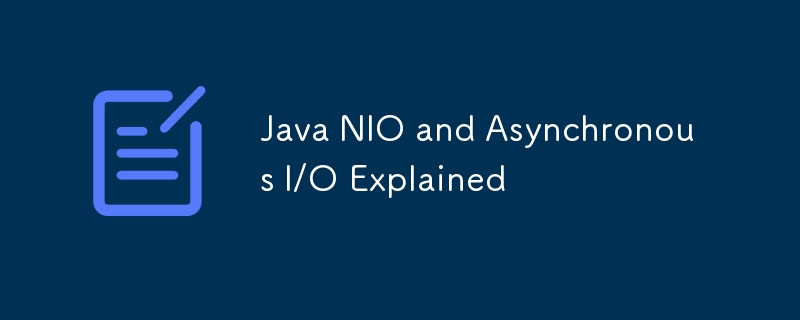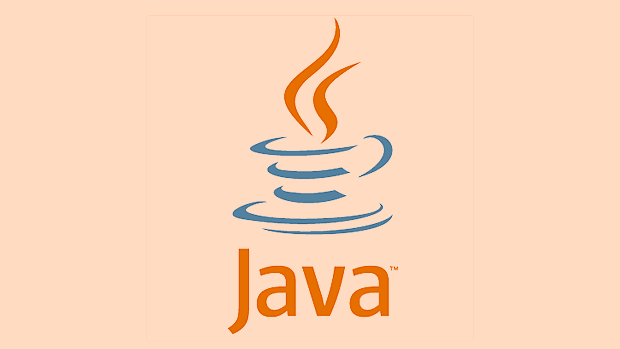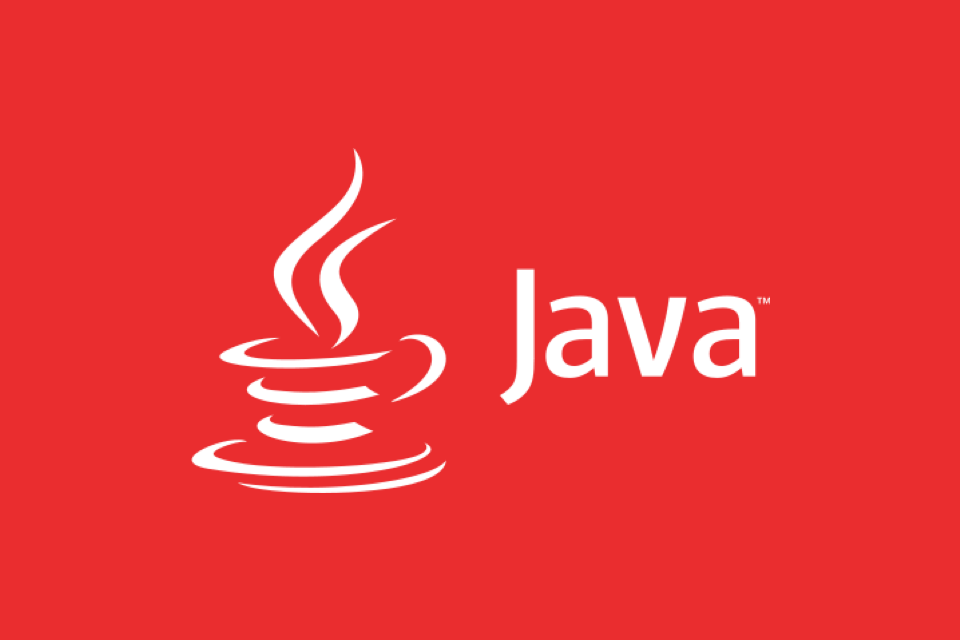The main differences between Java NIO and Asynchronous I/O are: 1. Java NIO adopts Reactor mode, polls ready events of multiple channels through Selector, and uses a single thread to process multiplexed I/O, which is suitable for high-concurrency network servers and fine control; 2. Asynchronous I/O adopts Proactor mode, based on event-driven and callback mechanisms, notifying the completion processor when the operation is completed, truly realizing asynchronous non-blocking, suitable for extremely scalable and low-latency systems; 3. The NIO thread model is simple, has good compatibility, but requires manual management of buffers and states. Although AIO does not need to be polled and has high resource utilization, it is complex in programming, easy to fall into callback hell and relies on operating system support; 4. In actual applications, NIO is more extensive. Frameworks such as Netty are built on NIO, while AIO is rarely used directly due to complexity and platform limitations. Therefore, when building a custom server, NIO should be preferred, and AIO should only be selected when there are clear asynchronous needs and can cope with complexity.

Java NIO (Non-blocking I/O) and Asynchronous I/O are two powerful mechanisms for handling I/O operations efficiently, especially in high-performance or scalable applications. While they might seem similar at first glance—both aim to improve I/O throughput and reduce blocking—they work differently and serve different use cases.

Let's break them down clearly.
1. Java NIO: Non-blocking I/O with Channels and Selectors
Java NIO, introduced in Java 1.4, is a way to perform non-blocking I/O using channels, buffers, and selectors. It allows a single thread to manage multiple I/O operations simultaneously.

Key Components:
- Channels : Unlike traditional streams, channels can read and write data bidedirectionally. Examples:
FileChannel,SocketChannel,ServerSocketChannel. - Buffers : Data is read into and written from buffers (eg,
ByteBuffer). You write data into a buffer, then flip it to read from it. - Selectors : Enable multiplexing—monitoring multiple channels for readiness (eg, data ready to read) using a single thread.
How Non-blocking I/O Works:
You register channels (like SocketChannel ) with a Selector . The selector checks which channels are ready for I/O operations (read, write, connect, accept). This allows one thread to handle many connections without blocking.
Selector selector = Selector.open();
ServerSocketChannel serverChannel = ServerSocketChannel.open();
serverChannel.bind(new InetSocketAddress(8080));
serverChannel.configureBlocking(false); // Non-blocking mode
serverChannel.register(selector, SelectionKey.OP_ACCEPT);
while (true) {
selector.select(); // Blocks until at least one channel is ready
Set<SelectionKey> keys = selector.selectedKeys();
for (SelectionKey key : keys) {
if (key.isAcceptable()) {
// Handle new connection
} if (key.isReadable()) {
// Read from channel
}
}
keys.clear();
}Use Case:
- High-concurrency servers (eg, web servers, chat servers) where thousandss of connections exist but only a few are active at a time.
- Efficient resource usage: fewer threads handling many clients.
Pros:
- Scalable with many connections.
- Fine-grained control over I/O operations.
Cons:
- More complex than traditional I/O.
- Requires careful management of buffers and selection keys.
2. Asynchronous I/O (AIO) – True Asynchronous Operations
Asynchronous I/O was added in Java 7 (NIO.2) via the java.nio.channels.AsynchronousSocketChannel , AsynchronousServerSocketChannel , and related classes. It's truly asynchronous and non-blocking , meaning you initiate an I/O operation and get notified when it completes—without polling.

How AIO Works:
You start an operation (eg, read or write) and provide a CompletionHandler . The operation runs in the background (often using OS-level async support like epoll on Linux or IOCP on Windows), and your handler is called when it finishes.
AsynchronousServerSocketChannel server = AsynchronousServerSocketChannel.open();
server.bind(new InetSocketAddress(8080));
server.accept(null, new CompletionHandler<AsynchronousSocketChannel, Void>() {
@Override
public void completed(AsynchronousSocketChannel client, Void attachment) {
// Handle client asynchronously
ByteBuffer buffer = ByteBuffer.allocate(1024);
client.read(buffer, null, new CompletionHandler<Integer, ByteBuffer>() {
@Override
public void completed(Integer result, ByteBuffer buf) {
// Data read successfully
System.out.println("Read " result " bytes");
}
@Override
public void failed(Throwable exc, ByteBuffer buf) {
// Handle error
}
});
}
@Override
public void failed(Throwable exc, Void attachment) {
// Handle accept failure
}
});Note: The main thread doesn't block. You rely on callbacks.
Use Case:
- Applications that need maximum scalability with minimum thread usage.
- Event-driven architectures where you want to avoid polling or thread-per-connection models.
Pros:
- Truly asynchronous; no busy waiting or polling.
- Can scale to tens of thousands of connections with minimal threads.
Cons:
- Callback-based programming can get messy (callback hell).
- Harder to debug and reason about.
- Not all platforms provide full OS-level async I/O support (performance varies).
NIO vs Asynchronous I/O: Key Differences
| Feature | Java NIO (Non-blocking) | Asynchronous I/O (AIO) |
|---|---|---|
| Threading Model | Reactor pattern (selector loop) | Proactor pattern (completion callbacks) |
| Control Flow | Polling with Selector
|
Event-driven, callback-based |
| Thread Usage | One thread handles many channels | Background threads callbacks |
| Complexity | Moderate | Higher (due to callbacks) |
| OS Support | Widely supported | Depends on OS async capabilities |
| Best For | High-throughput network servers | Extremely scalable, low-latency systems |
When to Use Which?
-
Use Java NIO when:
- You need scalable network handling.
- You're building custom servers (HTTP, WebSocket, etc.).
- You want control and prediction.
- You're OK with managing state and buffers manually.
-
Use Asynchronous I/O when:
- You want true fire-and-forget I/O.
- You're building event-driven systems.
- You're on a platform with solid async I/O support.
- You're using frameworks that abstract the complexity (eg, Netty, though it uses NIO under the hood).
?? Note: Although being available since Java 7, AIO is less commonly used than NIO in practice. Many high-performance libraries (like Netty, Undertow) are built on NIO/epoll/kqueue because they offer better control and broader compatibility.
Bottom Line
- Java NIO gives you non-blocking I/O via multiplexing with selectors—great for scalable servers.
- Asynchronous I/O provides true async operations with completion notifications—powerful but underused due to complexity and platform limitations.
Both are tools for writing efficient, scalable Java applications, but NIO is more widely adopted and practical for most use cases .
Basically, if you're building something like a custom server, start with NIO and selectors. Only go full AIO if you have a specific need and are ready to handle the complexity.
The above is the detailed content of Java NIO and Asynchronous I/O Explained. For more information, please follow other related articles on the PHP Chinese website!

Hot AI Tools

Undress AI Tool
Undress images for free

Undresser.AI Undress
AI-powered app for creating realistic nude photos

AI Clothes Remover
Online AI tool for removing clothes from photos.

Clothoff.io
AI clothes remover

Video Face Swap
Swap faces in any video effortlessly with our completely free AI face swap tool!

Hot Article

Hot Tools

Notepad++7.3.1
Easy-to-use and free code editor

SublimeText3 Chinese version
Chinese version, very easy to use

Zend Studio 13.0.1
Powerful PHP integrated development environment

Dreamweaver CS6
Visual web development tools

SublimeText3 Mac version
God-level code editing software (SublimeText3)
 Asynchronous Programming Techniques in Modern Java
Jul 07, 2025 am 02:24 AM
Asynchronous Programming Techniques in Modern Java
Jul 07, 2025 am 02:24 AM
Java supports asynchronous programming including the use of CompletableFuture, responsive streams (such as ProjectReactor), and virtual threads in Java19. 1.CompletableFuture improves code readability and maintenance through chain calls, and supports task orchestration and exception handling; 2. ProjectReactor provides Mono and Flux types to implement responsive programming, with backpressure mechanism and rich operators; 3. Virtual threads reduce concurrency costs, are suitable for I/O-intensive tasks, and are lighter and easier to expand than traditional platform threads. Each method has applicable scenarios, and appropriate tools should be selected according to your needs and mixed models should be avoided to maintain simplicity
 Best Practices for Using Enums in Java
Jul 07, 2025 am 02:35 AM
Best Practices for Using Enums in Java
Jul 07, 2025 am 02:35 AM
In Java, enums are suitable for representing fixed constant sets. Best practices include: 1. Use enum to represent fixed state or options to improve type safety and readability; 2. Add properties and methods to enums to enhance flexibility, such as defining fields, constructors, helper methods, etc.; 3. Use EnumMap and EnumSet to improve performance and type safety because they are more efficient based on arrays; 4. Avoid abuse of enums, such as dynamic values, frequent changes or complex logic scenarios, which should be replaced by other methods. Correct use of enum can improve code quality and reduce errors, but you need to pay attention to its applicable boundaries.
 Understanding Java NIO and Its Advantages
Jul 08, 2025 am 02:55 AM
Understanding Java NIO and Its Advantages
Jul 08, 2025 am 02:55 AM
JavaNIO is a new IOAPI introduced by Java 1.4. 1) is aimed at buffers and channels, 2) contains Buffer, Channel and Selector core components, 3) supports non-blocking mode, and 4) handles concurrent connections more efficiently than traditional IO. Its advantages are reflected in: 1) Non-blocking IO reduces thread overhead, 2) Buffer improves data transmission efficiency, 3) Selector realizes multiplexing, and 4) Memory mapping speeds up file reading and writing. Note when using: 1) The flip/clear operation of the Buffer is easy to be confused, 2) Incomplete data needs to be processed manually without blocking, 3) Selector registration must be canceled in time, 4) NIO is not suitable for all scenarios.
 How Java ClassLoaders Work Internally
Jul 06, 2025 am 02:53 AM
How Java ClassLoaders Work Internally
Jul 06, 2025 am 02:53 AM
Java's class loading mechanism is implemented through ClassLoader, and its core workflow is divided into three stages: loading, linking and initialization. During the loading phase, ClassLoader dynamically reads the bytecode of the class and creates Class objects; links include verifying the correctness of the class, allocating memory to static variables, and parsing symbol references; initialization performs static code blocks and static variable assignments. Class loading adopts the parent delegation model, and prioritizes the parent class loader to find classes, and try Bootstrap, Extension, and ApplicationClassLoader in turn to ensure that the core class library is safe and avoids duplicate loading. Developers can customize ClassLoader, such as URLClassL
 How does a HashMap work internally in Java?
Jul 15, 2025 am 03:10 AM
How does a HashMap work internally in Java?
Jul 15, 2025 am 03:10 AM
HashMap implements key-value pair storage through hash tables in Java, and its core lies in quickly positioning data locations. 1. First use the hashCode() method of the key to generate a hash value and convert it into an array index through bit operations; 2. Different objects may generate the same hash value, resulting in conflicts. At this time, the node is mounted in the form of a linked list. After JDK8, the linked list is too long (default length 8) and it will be converted to a red and black tree to improve efficiency; 3. When using a custom class as a key, the equals() and hashCode() methods must be rewritten; 4. HashMap dynamically expands capacity. When the number of elements exceeds the capacity and multiplies by the load factor (default 0.75), expand and rehash; 5. HashMap is not thread-safe, and Concu should be used in multithreaded
 Effective Use of Java Enums and Best Practices
Jul 07, 2025 am 02:43 AM
Effective Use of Java Enums and Best Practices
Jul 07, 2025 am 02:43 AM
Java enumerations not only represent constants, but can also encapsulate behavior, carry data, and implement interfaces. 1. Enumeration is a class used to define fixed instances, such as week and state, which is safer than strings or integers; 2. It can carry data and methods, such as passing values ??through constructors and providing access methods; 3. It can use switch to handle different logics, with clear structure; 4. It can implement interfaces or abstract methods to make differentiated behaviors of different enumeration values; 5. Pay attention to avoid abuse, hard-code comparison, dependence on ordinal values, and reasonably naming and serialization.
 How to handle exceptions properly in Java?
Jul 06, 2025 am 02:43 AM
How to handle exceptions properly in Java?
Jul 06, 2025 am 02:43 AM
The key to handling exceptions in Java is to catch them, handle them clearly, and not cover up problems. First, we must catch specific exception types as needed, avoid general catches, and prioritize checkedexceptions. Runtime exceptions should be judged in advance; second, we must use the log framework to record exceptions, and retry, rollback or throw based on the type; third, we must use the finally block to release resources, and recommend try-with-resources; fourth, we must reasonably define custom exceptions, inherit RuntimeException or Exception, and carry context information for easy debugging.
 What is a Singleton design pattern in Java?
Jul 09, 2025 am 01:32 AM
What is a Singleton design pattern in Java?
Jul 09, 2025 am 01:32 AM
Singleton design pattern in Java ensures that a class has only one instance and provides a global access point through private constructors and static methods, which is suitable for controlling access to shared resources. Implementation methods include: 1. Lazy loading, that is, the instance is created only when the first request is requested, which is suitable for situations where resource consumption is high and not necessarily required; 2. Thread-safe processing, ensuring that only one instance is created in a multi-threaded environment through synchronization methods or double check locking, and reducing performance impact; 3. Hungry loading, which directly initializes the instance during class loading, is suitable for lightweight objects or scenarios that can be initialized in advance; 4. Enumeration implementation, using Java enumeration to naturally support serialization, thread safety and prevent reflective attacks, is a recommended concise and reliable method. Different implementation methods can be selected according to specific needs






